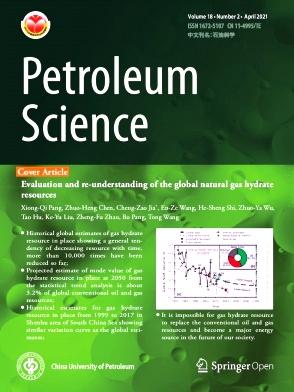将有限差分方案与数值弥散抑制神经网络相结合的地震建模方法
IF 6
1区 工程技术
Q2 ENERGY & FUELS
引用次数: 0
摘要
地震有限差分(FD)建模受到数值离散的影响,包括时间离散和空间离散,这会降低数值建模的精度。为了提高传统数值建模的精度和效率,我将有限差分方案与数值离散抑制神经网络(NDSNN)相结合,开发了一种新的地震建模方法。该方法包括以下步骤。首先,生成由少量波场快照组成的训练数据集。低精度波场数据和高精度波场数据的波场快照是配对的,低精度波场快照涉及明显的数值色散,包括时间色散和空间色散。其次,训练 NDSNN,直到网络收敛,同时抑制时间和空间色散。第三,利用大时间步长和粗网格的 FD 模型快速计算整组低精度波场数据。第四,将 NDSNN 应用于整套低精度波场数据,以抑制包括时间和空间色散在内的数值色散。数值建模实例验证了我提出的方法在提高计算精度和效率方面的有效性。本文章由计算机程序翻译,如有差异,请以英文原文为准。
Seismic modeling by combining the finite-difference scheme with the numerical dispersion suppression neural network
Seismic finite-difference (FD) modeling suffers from numerical dispersion including both the temporal and spatial dispersion, which can decrease the accuracy of the numerical modeling. To improve the accuracy and efficiency of the conventional numerical modeling, I develop a new seismic modeling method by combining the FD scheme with the numerical dispersion suppression neural network (NDSNN). This method involves the following steps. First, a training data set composed of a small number of wavefield snapshots is generated. The wavefield snapshots with the low-accuracy wavefield data and the high-accuracy wavefield data are paired, and the low-accuracy wavefield snapshots involve the obvious numerical dispersion including both the temporal and spatial dispersion. Second, the NDSNN is trained until the network converges to simultaneously suppress the temporal and spatial dispersion. Third, the entire set of low-accuracy wavefield data is computed quickly using FD modeling with the large time step and the coarse grid. Fourth, the NDSNN is applied to the entire set of low-accuracy wavefield data to suppress the numerical dispersion including the temporal and spatial dispersion. Numerical modeling examples verify the effectiveness of my proposed method in improving the computational accuracy and efficiency.
求助全文
通过发布文献求助,成功后即可免费获取论文全文。
去求助
来源期刊

Petroleum Science
地学-地球化学与地球物理
CiteScore
7.70
自引率
16.10%
发文量
311
审稿时长
63 days
期刊介绍:
Petroleum Science is the only English journal in China on petroleum science and technology that is intended for professionals engaged in petroleum science research and technical applications all over the world, as well as the managerial personnel of oil companies. It covers petroleum geology, petroleum geophysics, petroleum engineering, petrochemistry & chemical engineering, petroleum mechanics, and economic management. It aims to introduce the latest results in oil industry research in China, promote cooperation in petroleum science research between China and the rest of the world, and build a bridge for scientific communication between China and the world.
 求助内容:
求助内容: 应助结果提醒方式:
应助结果提醒方式:


